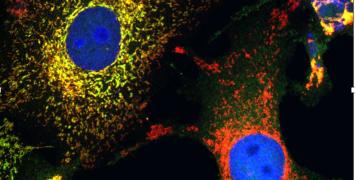Smarter, faster, stronger drug therapies
We are living longer and, understandably, we wish to be in better health as we age. It is estimated that by 2050 the number of people aged 65 and over will reach 16% of the global population. Medical science has an ever-growing arsenal of drugs it can use to treat an increasing range of conditions. Yet, these drugs are not acting as effectively as their potential promises. Dr. Armağan Koçer and her research team at the University of Groningen (The Netherlands) are using their ERC funding to tackle the following puzzle: how can we develop methods of drug delivery that are as revolutionary as the medicine they contain?
Dr. Koçer is taking part in the event "New Technologies from the ERC" in Brussels on 4 July. It will enable her to pitch her ideas to potential investors, and to showcase how the support for her fundamental research has led to the discovery of its commercial potential. Speaking about her preparations for the event, she stresses: “I will focus on the facts, rather than on making promises. I hope to demonstrate how the technology we have developed satisfies an unmet need for speedy, safe and accurate drug delivery and how we are the people to fulfil that need.”
Liposomes: natural drug deliverers
Dr. Koçer’s ERC Starting Grant concentrated on mechano-sensitive ion channels. Embedded in cell membranes, they function as environmental sensors: staying either tightly closed or opening when triggered. Focusing on osmosensing (changes in the cell structure) in particular, Dr. Koçer explored these mechano-sensitive ion channels in order to determine more accurately how they behave. Their malfunctioning play a part in diseases as various as glaucoma, heart arrhythmias and polycystic kidney disease. The hypothesis driving her ERC-funded project is that if we can understand more about how these sensory responses operate at the molecular level, we might have the tools to tackle the diseases they cause.
Dr. Koçer and her team have therefore focused their energies on liposomes: artificial nano-vehicles which mimic the cell membrane. Liposomes can be used to encapsulate drugs. They are revolutionary because they can be used to deliver the drugs directly to the affected area. Current methods of drug delivery are inefficient because they cannot always prevent the drug from leaking before it reaches its destination: causing unwanted side effects for the patient, as well as reducing the drug’s efficacy. Liposomes could potentially change all this.
“Opening the door”
Drawing on synthetic biology techniques, Dr. Koçer and her team have developed the basis for a treatment which operates with greater sensitivity. A stable and sensitive bio-sensory device uses a novel release mechanism: remote controlled valves. She explains: “The focus of the Proof of Concept research was on producing a sensor which can recognise signals, and respond to them by transforming itself into an “open door”. We hope to demonstrate the viability of a system which “opens the doors” of the container, allowing the drug to be released only in the right place. The backing from the ERC has let us test these hypotheses in vivo, which is really helpful.”
The introduction of sensory pores into the liposomes should ensure that drug delivery matches the efficacy of the drugs themselves. Employing such a system would result not only in better therapeutic outcomes, but also in reduced costs and side effects experienced by patients. New opportunities may also arise to use drugs that are currently inefficient as they are degraded before reaching the diseased tissues.
Discussing her Proof-of-Concept funding, Dr Koçer emphasises: “I have always been interested in how the results of my fundamental research can be useful. So I have always had an eye for the applications of my research - how I can translate an idea into practice.” She also highlights how important the grants have been to her starting out as a young researcher: “If you are seen as someone who can attract research funding, you are more likely to get hired. Once you are established, the endorsement of the ERC means that you can follow an independent scientific path. You have the freedom to test ideas, to really experiment. You are no longer held back - you can really just go for it.”






